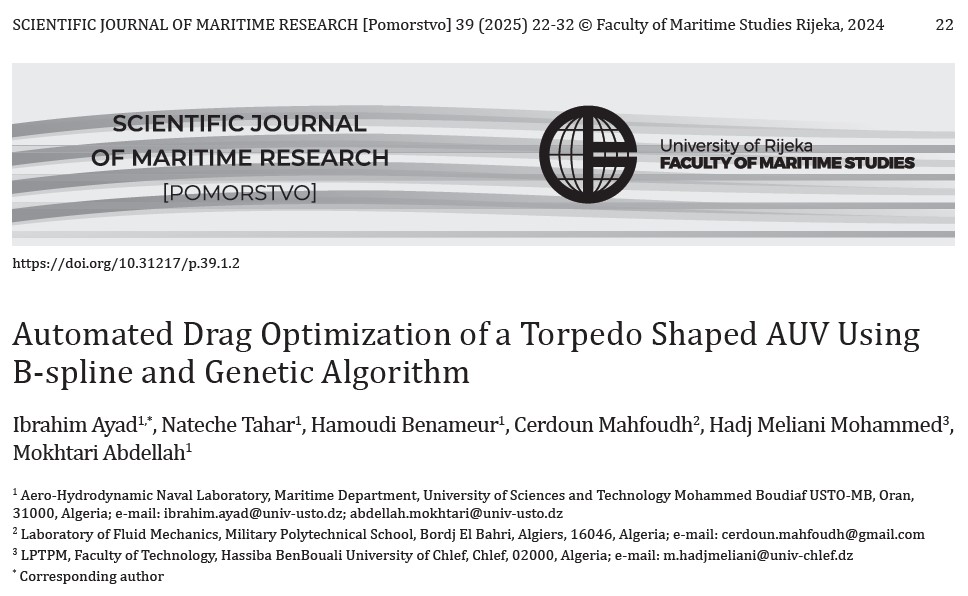Automated Drag Optimization of a Torpedo Shaped AUV Using B-spline and Genetic Algorithm
Keywords:
AUV, Torpedo, Shape optimization, B-spline, Genetic algorithm, Drag reductionAbstract
Torpedo-shaped autonomous underwater vehicles (AUV) offer versatile capabilities such as surveying underwater environment, collecting data, performing inspections and even assisting in search and rescue operation. However, their design still attract the attention of manufacture due to the various parameters that affect the final shape. This article aims to optimize the shape of a torpedo-shaped (AUV) through the utilization of B-splines for shape representation and the application of genetic algorithms for form optimization, in which the main objective is to minimize the drag. The automated optimization procedure uses minimum control points to form the nose and the tail of the AUV whereas the cylindrical part remain unchanged. To evaluate the performance, the computational fluid dynamics (CFD) model as high fidelity model is used and it is calibrated for a DREA type UV. The overall strategy presents a drag reduction about 19 %.

Downloads
Published
Issue
Section
License
Copyright (c) 2024 Ibrahim AYAD, Tahar NATECHE, Benameur HAMOUDI, Mahfoudh CERDOUN, Mohammed HADJ MELIANI, Abdellah MOKHTARI

This work is licensed under a Creative Commons Attribution-NonCommercial-NoDerivatives 4.0 International License.
Scientific Journal of Maritime Research understands the need for authors to disseminate and maximize the impact of their research. When submitting an article for publishing in Scientific Journal of Maritime Research, it implies that the Corresponding Author transfers, with the consent of all Coauthors, the copyright ownership in the referenced submission, including all versions in any format now known or hereafter developed, to the Scientific Journal of Maritime Research.
Copyright protects your original work and research material and prevents others from using it without your permission. Others will be required to credit you and your work properly, thus increasing its impact. Should your submission be rejected or withdrawn prior to acceptance for publication by Scientific Journal of Maritime Research, this transfer will be null and void.
Authors, users or readers of an article need clear instructions on how they can use the article. Scientific Journal of Maritime Research uses the Creative Commons Attribution-NonCommercial-NoDerivatives (CC-BY-NC-ND) 4.0 International License, which governs the use, publishing and distribution of articles by authors, publishers and the wider general public.
The authors are allowed to post a digital file of the published article, or the link to the published article (Scientific Journal of Maritime Research web page) may be made publicly available on websites or repositories, such as the Author’s personal website, preprint servers, university networks or primary employer’s institutional websites, third party institutional or subject-based repositories, and conference websites that feature presentations by the Author(s) based on the published article, under the condition that the article is posted in its unaltered Scientific Journal of Maritime Research form, exclusively for non-commercial purposes.




